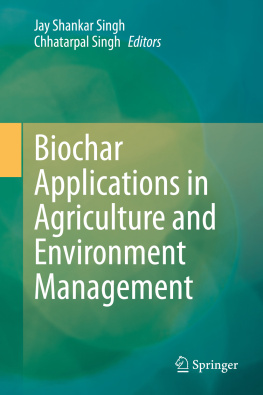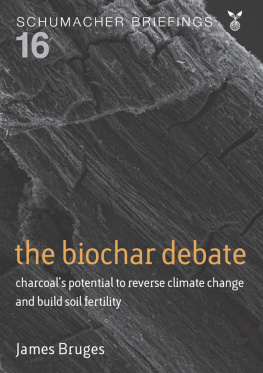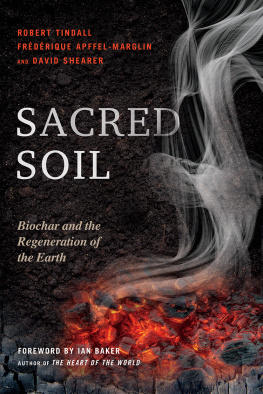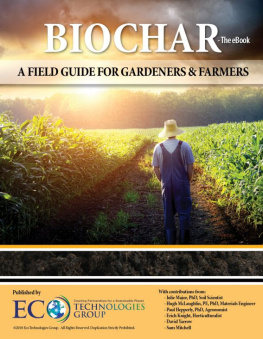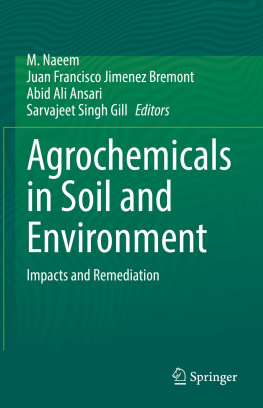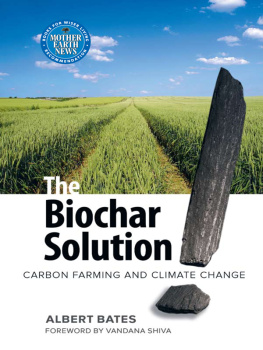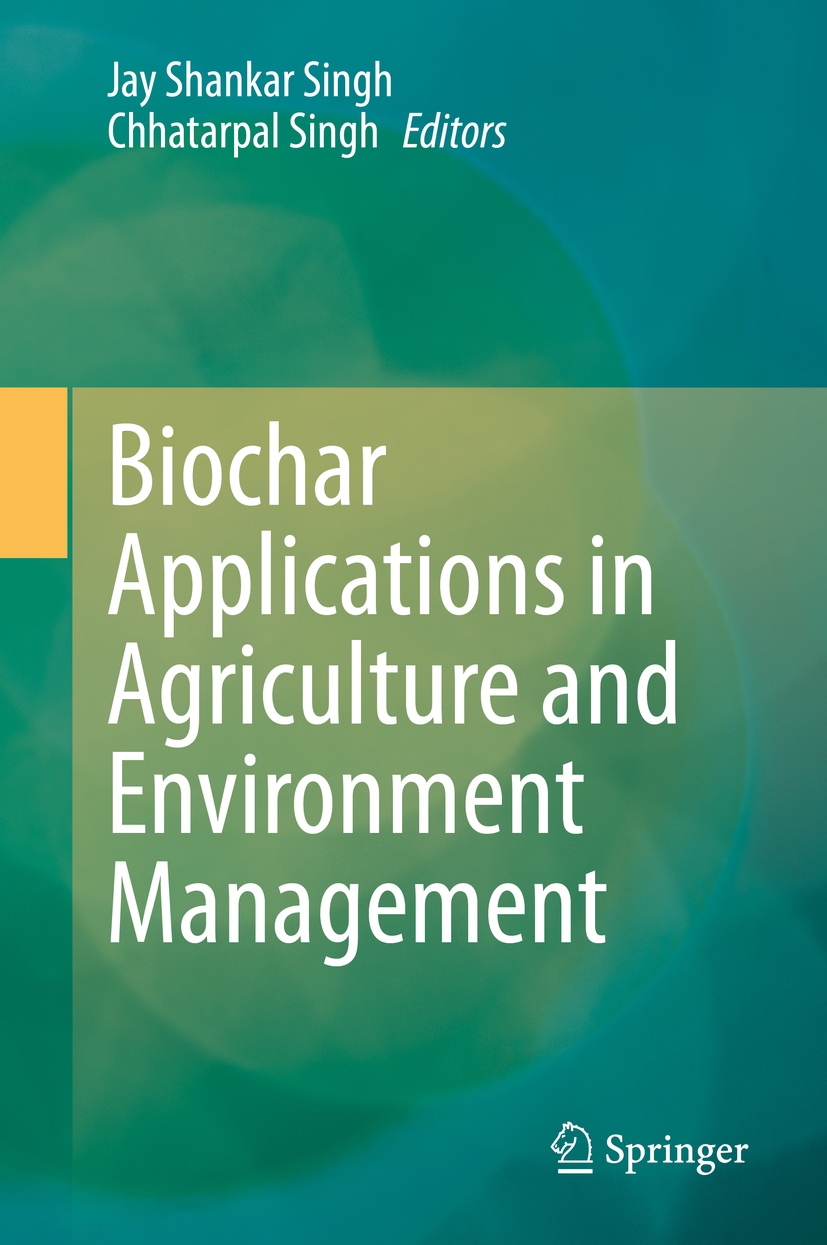Editors
Jay Shankar Singh
Department of Environmental Microbiology, Babasaheb Bhimrao Ambedkar University, Lucknow, Uttar Pradesh, India
Chhatarpal Singh
Department of Environmental Microbiology, Babasaheb Bhimrao Ambedkar University, Lucknow, Uttar Pradesh, India
ISBN 978-3-030-40996-8 e-ISBN 978-3-030-40997-5
https://doi.org/10.1007/978-3-030-40997-5
Springer Nature Switzerland AG 2020
This work is subject to copyright. All rights are reserved by the Publisher, whether the whole or part of the material is concerned, specifically the rights of translation, reprinting, reuse of illustrations, recitation, broadcasting, reproduction on microfilms or in any other physical way, and transmission or information storage and retrieval, electronic adaptation, computer software, or by similar or dissimilar methodology now known or hereafter developed.
The use of general descriptive names, registered names, trademarks, service marks, etc. in this publication does not imply, even in the absence of a specific statement, that such names are exempt from the relevant protective laws and regulations and therefore free for general use.
The publisher, the authors, and the editors are safe to assume that the advice and information in this book are believed to be true and accurate at the date of publication. Neither the publisher nor the authors or the editors give a warranty, expressed or implied, with respect to the material contained herein or for any errors or omissions that may have been made. The publisher remains neutral with regard to jurisdictional claims in published maps and institutional affiliations.
This Springer imprint is published by the registered company Springer Nature Switzerland AG.
The registered company address is: Gewerbestrasse 11, 6330 Cham, Switzerland
Foreword

There has been an increased pressure on the meagre available land resources due to rapid urbanization, which, in turn, has resulted in a gradual but steady deterioration in the cultivable land worldwide. In addition, the adoption of green revolution technologies in several countries has made agriculture chemical-intensive, which has contributed significantly to the deterioration of the health of the available agricultural soils. The cultivable agricultural land is scarce and, consequently, is a limiting factor, leaving no scope for further expansion of agriculture. The use of crop residues (CRs) generated in copious amounts annually, in management of soil fertility, reclamation and restoration of marginal lands, reducing air pollution, etc. appears as an innovative option. The management of huge amount of CRs is expected to relieve this pressure to a large extent. Burning of CRs is threatening soil health, causing air pollution, and drastically affecting the soil microbial diversity. Decomposition of paddy residues under anaerobic flooded conditions has substantially increased greenhouse gas emissions, particularly methane. Therefore, appropriate sustainable management of huge amount of CRs produced every year is the need of the hour. Appropriate strategies for management of CRs and augmented environmental awareness can show alternatives to the current practices of irrational burning of CRs.
Crop residues-based biochar has recently received significant attention of researchers with its potential to improve the soil physicochemical status and its contribution to the enrichment of beneficial soil microbiomes. Limited literature is available on impact of CRs-based biochar application on nutrient dynamics, greenhouse gas emission mitigations, crop yields, and beneficial microbial community dynamics of agroecosystems. The editors have invited experts to contribute articles in the area of sustainable soil health and environmental management. This volume will enhance our knowledge about better performance of soil microbes in soil, resulted due to CRs burning, and how these changes along with other environmental factors will affect the soil fertility and crop yields. Overall, the bookBiochar Applications in Agriculture and Environment Management, gives an overview of the current status of CRs management. This book also gives directions to popularize related technologies that can mitigate the decline in soil fertility of cultivable land. The chapters in the book also help us to focus on beneficial soil microbial diversity for sustainable agriculture and decrease pressure on the need for more cultivable land.

Appa Rao Podile
December 28, 2019
Preface
Biochar use in agricultural soil has been projected as effective options to mitigate the soil fertility health due to climate change. Its sole use may also cause salt stress in the soil as it contains large concentration of nutrient metals. Crop residues-based biochar has been recently proposed as suitable soil fertility enhancer as it improves the physicochemical structure and beneficial microbial biomass of soil. Previous studies have indicated that wood- or manure-based biochars can reduce leaching of fertilizer N in highly weathered subtropical or tropical soils using pot experiments. Previous investigations argued inconsistent effects of biochar additions on greenhouse gas emissions, attributable to many factors, such as soil and biochar types, moisture regime, nutrient availability, and potentially other unknown causes. However, few studies and books describe the impact of biochar on inorganic nutrient dynamics, greenhouse gas emission mitigation, pollution decontamination, and beneficial microbial community dynamics of cropland soils. Therefore, this book,Biochar Applications in Agriculture and Environment Management, considers leading experts to contribute articles that may describe the role of biochar application on soil nutrient dynamics of disturbed agricultural fields and as soil conditioner for saline/stressed/nutrient poor soils. This book also describes the impact of biochar application on C sequestration and greenhouse gas emissions/mitigation from agricultural soil and the role of biochar in remediation of contaminated agricultural soils to evaluate the addition of biochar in dynamics of beneficial soil microbial communities and soil microbial biomass levels. However, literature on the interactive effect of both biochar and organic fertilizers is scarce. Therefore, further study on importance of organic farming and intensive C-sequestration strategies such as biochar production from agricultural wastes is important.
We are thankful to all contributors for their informative articles to this book. We are sure that this volume will be useful to students, scientists, and academicians concerned with the management of CRs and its applications in sustainable agricultural development.

